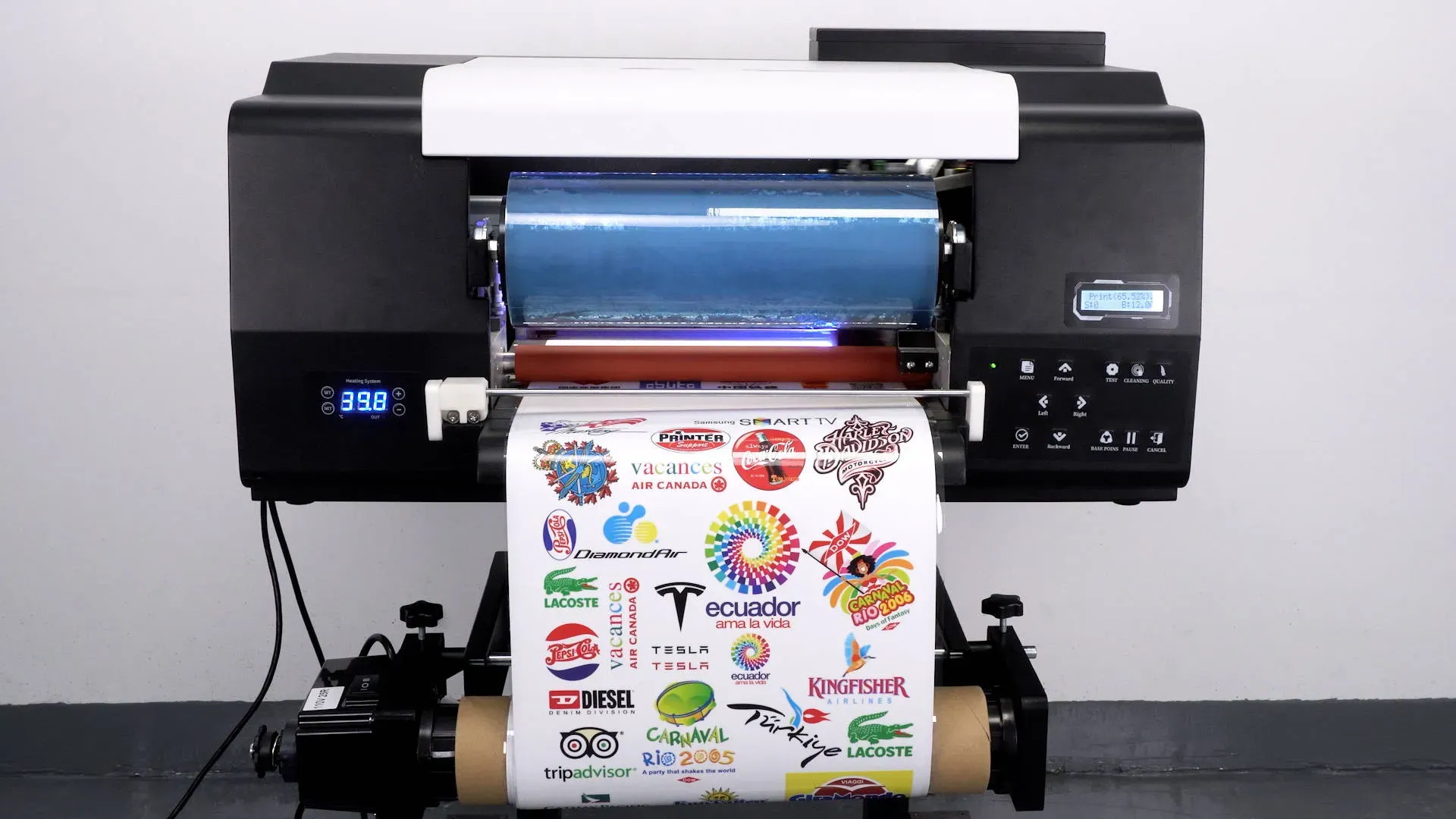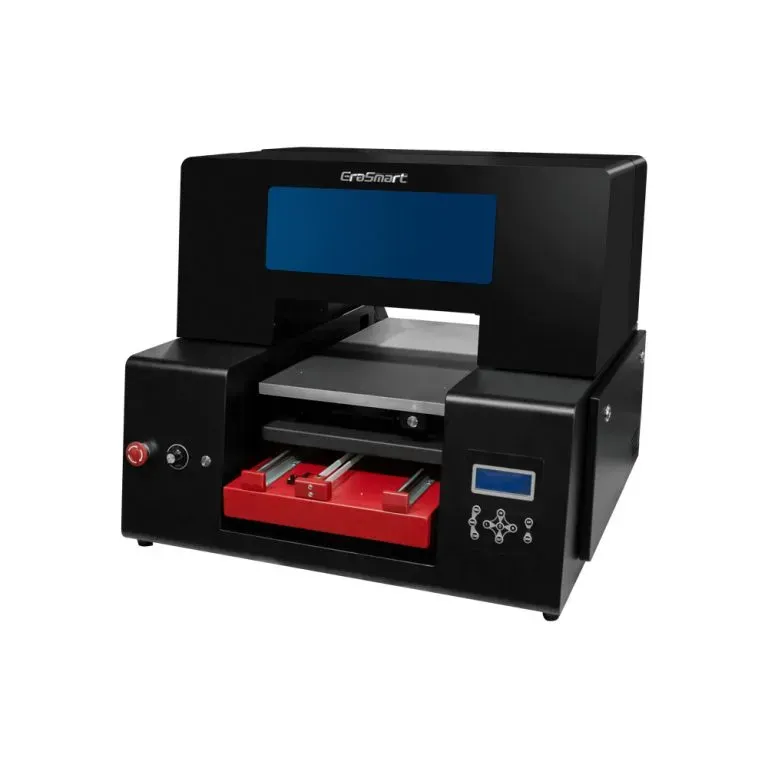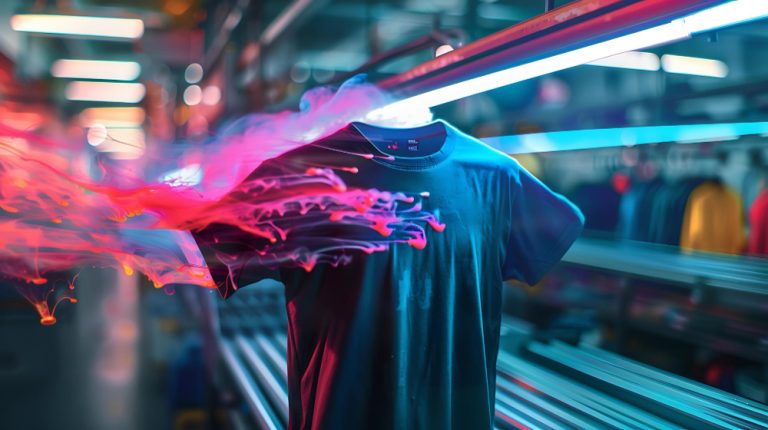UV DTF, or UV Direct-to-Film printing, is revolutionizing the custom printing industry by combining the advanced capabilities of UV printing with the innovative aspects of DTF technology. This cutting-edge method allows for vibrant, durable prints on a wide array of materials, making it ideal for personalized products such as apparel and promotional items. As sustainability becomes a vital concern in manufacturing, UV DTF offers a more eco-friendly alternative to traditional printing techniques, minimizing waste while maximizing quality. The rise in demand for customized solutions is propelling businesses to adopt UV DTF, aligning with the growing consumer expectation for unique and tailored offerings. In this article, we explore the significant advancements, market trends, and future potential of UV DTF printing within the landscape of custom printing solutions.
In recent years, innovations like UV Direct-to-Film printing have gained popularity in the realm of custom print solutions, exhibiting a remarkable blend of speed and quality. Often referred to as UV DTF printing, this technique utilizes advanced UV inks to produce exceptional prints on various substrates, catering to the rising trends in personalized products. As manufacturing industries strive to incorporate sustainable printing practices, UV DTF stands out by significantly reducing waste produced during the printing process. Moreover, its capacity for delivering high-resolution, durable results has made it a go-to option for businesses seeking efficiency without compromising quality. This introduction outlines the evolution and growing significance of UV DTF technology in meeting modern consumer demands.
Introduction to UV DTF Printing
The world of printing technology is evolving, and at the forefront of this evolution is UV Direct-to-Film (DTF) printing. This modern technique combines the strengths of traditional UV printing with the adaptability of DTF technology, resulting in a more efficient and effective printing solution. UV DTF has quickly gained popularity in custom printing due to its ability to produce high-quality outputs on a variety of substrates, including textiles, plastics, and metals. As consumers increasingly demand personalization in their products, this technology is well-positioned to meet those needs with speed and precision.
One of the most significant advantages of UV DTF printing is its versatility. The method allows for vibrant, detailed prints not only on standard fabrics but also on unconventional surfaces, making it ideal for apparel, promotional materials, and bespoke items. This ability to work across different materials enhances its utility across various industries, thus reflecting the broader trend in manufacturing where tailored solutions are becoming essential. Moreover, its production efficiency means that both large and small businesses can benefit, helping them to stay competitive in a fast-paced market.
The Process of UV DTF Printing
Understanding the process behind UV DTF printing is crucial for businesses looking to adopt this technology. It begins with specialized UV-curable inks that are applied to a film. This film serves as a carrier for the design, which is then exposed to ultraviolet light to ensure the inks are cured. This two-step process of printing and curing not only guarantees durability but also allows for rapid production cycles, meaning that businesses can fulfill large orders swiftly without compromising on quality.
Once the inks have cured, the film is then ready for transfer to the desired substrate, facilitated by heat press techniques. This combination of UV printing with DTF technology offers a flexible solution that can accommodate a range of customer requests for personalized products, from unique garment designs to promotional items. As the demand for customized solutions rises, understanding these processes becomes essential for businesses aiming to leverage the benefits of UV DTF printing.
Key Advantages of UV DTF Printing
One of the standout advantages of UV DTF printing is its unparalleled versatility. This printing technology can effectively create quality outputs across an impressive range of materials, including cotton, polyester, and even harder substrates like metals and plastics. Such flexibility makes it an ideal choice for businesses that wish to expand their offerings without investing in multiple printers for different materials. Additionally, the ability to print in vibrant colors with exceptional detail enables companies to produce standout products that cater to the needs of today’s discerning consumers.
The high quality of UV DTF prints also warrants mention. Unlike other printing techniques, UV DTF yields long-lasting prints with remarkable color vibrancy, which is crucial for wearable products that go through multiple washes. Companies benefit from higher customer satisfaction, as the durability of these prints means fewer reprints and returns. Moreover, the reliability of UV inks translates into a more sustainable business practice, aligning with the increasing consumer preference for environmentally friendly and responsibly made products.
Reduced Environmental Impact of UV DTF
Sustainability is a cornerstone of modern manufacturing, and UV DTF printing stands out for its reduced environmental impact. The process not only minimizes wastage compared to traditional printing techniques but also employs UV-curable inks that are less harmful to the environment. With a focus on eco-friendly practices, businesses adopting UV DTF technology can resonate well with environmentally conscious consumers who prioritize sustainability in their purchasing decisions. This shift towards greener solutions can significantly enhance a brand’s reputation in today’s market.
Moreover, the efficiency of the UV DTF process further aids in reducing the carbon footprint associated with printing. The dual-stage curing method utilizes energy more effectively, and since there’s less material waste generated, it promotes a more sustainable production model. As industries continue to emphasize sustainability, adopting UV DTF technology not only meets consumers’ demands for eco-friendly practices but also positions businesses as leaders in the pursuit of a greener future.
Market Trends Supporting UV DTF Growth
The market for UV DTF printing is booming, largely fueled by the growing consumer desire for personalization. As more manufacturers become aware of the benefits of this innovative printing method, we can expect a rise in the production capacity of UV DTF machines and inks. Such growth makes this technology increasingly accessible to smaller businesses and independent creators who are eager to tap into the custom printing market. With advancements in technology and decreasing costs, the proliferation of UV DTF solutions is set to revolutionize how businesses interact with their customers.
Additionally, the trend toward custom products is not limited to one industry but spans various sectors, including fashion, home decor, and promotional goods. This widespread interest in personalization means that UV DTF technology will play a critical role in meeting the diverse needs of consumers, allowing businesses to cater to niche markets with ease. As the momentum continues, it is essential for businesses to stay ahead of market trends and consider integrating UV DTF printing as part of their production strategies.
Future Outlook and Innovations in UV DTF Technology
The future of UV DTF printing looks promising, with significant innovations on the horizon. As research and development efforts focus on improving ink formulations, we can expect advancements that enhance adhesion and durability while broadening the range of compatible substrates. Such innovations will allow businesses to expand their product offerings and improve the overall customer experience, thus solidifying UV DTF’s position in the printing industry. As these technologies evolve, they will address existing limitations, making the process even more efficient and user-friendly.
Furthermore, the ongoing trend towards personalization is expected to fuel increased interest and investment in UV DTF printing. With more creators, from large firms to individual artists, looking to engage in bespoke projects, the adoption of UV DTF techniques will likely become commonplace in the custom printing landscape. This shift will fundamentally transform how businesses approach custom printing, with UV DTF technology paving the way for a new era characterized by creativity, efficiency, and sustainability.
Frequently Asked Questions
What is UV DTF technology and how does it differ from traditional printing methods?
UV DTF technology, short for UV Direct-to-Film printing, combines the advantages of UV printing with DTF technology to provide high-quality, durable prints on various substrates. Unlike traditional printing methods that may rely on lengthy setups and limited materials, UV DTF offers faster production times and versatile applications, making it ideal for custom printing.
What are the main advantages of using UV DTF in custom printing?
The main advantages of UV DTF in custom printing include versatility across multiple materials such as fabrics, plastics, and metals, high-quality outputs with vibrant colors, reduced environmental impact due to efficient ink usage, and rapid production times that cater to the growing demand for personalized products.
Can UV DTF be considered a sustainable printing option?
Yes, UV DTF can be considered a sustainable printing option. Its efficient curing process minimizes waste from inks and films, aligning with the industry’s shift towards eco-friendly practices. This makes UV DTF a favorable choice for businesses looking to reduce their environmental footprint while offering high-quality custom printing.
What types of materials can be printed using UV DTF technology?
UV DTF technology is versatile and can be applied to a wide range of materials including various fabrics (cotton, polyester), plastics (polycarbonate, acrylic), and metals (aluminum, stainless steel). This capability makes it suitable for diverse industries and custom printing applications.
What challenges might businesses face when adopting UV DTF printing?
Some challenges businesses might face when adopting UV DTF printing include high initial investment costs for specialized equipment, concerns about long-term durability under harsh conditions, and the necessity for skilled personnel to effectively operate the printers. These factors require consideration and planning for successful implementation.
How is the market outlook for UV DTF printing technologies?
The market outlook for UV DTF printing technologies is promising, with significant growth projected as demand for personalized products rises. As more manufacturers adopt this technology, costs are expected to decrease, making UV DTF accessible to a broader range of businesses, including smaller creators and startups.
| Key Point | Details |
|---|---|
| Understanding UV DTF Printing | UV DTF printing merges the benefits of UV printing technology with DTF techniques, offering versatility and speed in custom printing. |
| Printing Process | Involves applying UV-curable inks onto a film, curing with UV light, and transferring designs using heat press technology. |
| Advantages | Versatility across materials, high-quality outputs, reduced environmental impact, and rapid production times. |
| Market Trends | Significant growth potential due to demand for personalized products; increasing accessibility for smaller businesses. |
| Challenges | Initial investment costs, durability concerns, and skill requirements for successful operation of printers. |
| Future Outlook | Advancements in technology are expected to improve efficiencies and expand capabilities in UV DTF printing. |
Summary
UV DTF printing is revolutionizing the custom printing industry by providing innovative solutions that cater to the increasing demand for personalized products. This cutting-edge technology offers remarkable advantages including versatility across various materials, high-quality resolution, and a commitment to reduced environmental impact. As the market continues to grow, businesses are harnessing the potential of UV DTF printing to deliver exceptional custom solutions, integrating innovative techniques that not only meet but exceed consumer expectations. With ongoing advancements and an improving landscape, UV DTF printing is set to redefine the future of custom printing.







